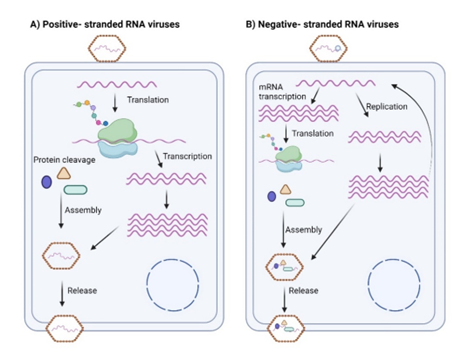How different viruses perturb host cellular machinery via short linear motifs
DOI:
https://doi.org/10.17179/excli2023-6328Keywords:
virus, Protein-Protein Interaction, short linear motifs, mimicryAbstract
The virus interacts with its hosts by developing protein-protein interactions. Most viruses employ protein interactions to imitate the host protein: A viral protein with the same amino acid sequence or structure as the host protein attaches to the host protein's binding partner and interferes with the host protein's pathways. Being opportunistic, viruses have evolved to manipulate host cellular mechanisms by mimicking short linear motifs. In this review, we shed light on the current understanding of mimicry via short linear motifs and focus on viral mimicry by genetically different viral subtypes by providing recent examples of mimicry evidence and how high-throughput methods can be a reliable source to study SLiM-mediated viral mimicry.

Downloads
Published
How to Cite
License
Copyright (c) 2023 Sobia Idrees, Keshav Raj Paudel, Tayyaba Sadaf, Philip M. Hansbro

This work is licensed under a Creative Commons Attribution 4.0 International License.
Authors who publish in this journal agree to the following terms:
- The authors keep the copyright and grant the journal the right of first publication under the terms of the Creative Commons Attribution license, CC BY 4.0. This licencse permits unrestricted use, distribution and reproduction in any medium, provided that the original work is properly cited.
- The use of general descriptive names, trade names, trademarks, and so forth in this publication, even if not specifically identified, does not imply that these names are not protected by the relevant laws and regulations.
- Because the advice and information in this journal are believed to be true and accurate at the time of publication, neither the authors, the editors, nor the publisher accept any legal responsibility for any errors or omissions presented in the publication. The publisher makes no guarantee, express or implied, with respect to the material contained herein.
- The authors can enter into additional contracts for the non-exclusive distribution of the journal's published version by citing the initial publication in this journal (e.g. publishing in an institutional repository or in a book).





